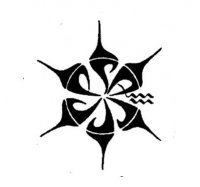Educational Materials
Teaching online? Check out this crowdsourced list of algae-related online resources.
The PSA Education Committee (chair: Kate Schoenrock-Rossiter, kate.schoenrock@outlook.com) is dedicated to promote and improve teaching and research in phycology through such activities as seminars, conferences, workshops, and production of educational materials, such as films and electronic media items; and recommend contracts to the Executive Committee for approval.
#TeachAlgae Contest 2020
We had entries from around the world for our first phycology education contest. Ten excellent entries were awarded a prize by our Education Committee. A selection of submitted resources can be downloaded here for educational use; please credit the author.
Activity – Algae challenge! A Pair-Matching game: English & Portugeuse versions (N. Ghilardi-Lopes)
Activity – Algae into Art: Transforming Macroscopic Freshwater Algae into Handmade Paper (D. Bowne, K. Arnold)
Activity – Eutrophication Mystery (J. Landin)
Activity – From the Kitchen of Dr. Isabella Abbott (H. Spalding, C. Smith)
Activity – Herbarium Collection Guidelines (K. Hind)
Activity – LAMPS: Lowcountry Algal Monitoring Program for Students (E. Sotka, H. Giddens)
Activity – Phycology: An Illustrated Study Guide (A. Khan, L. Lewis, J. Smith)
Activity – Phycology Guess Who? (A. Lecher)
Activity – Phycological Nicknames (R. Fitch)
Activity – Remote Isolation of algae as well as people (K. Capistrant-Fossa, S. Brawley)
Activity – Slimy Cards: Card Game for Introducing Algal Taxonomy (D. Dande, R. Thengodkar, A. Bhavsar, S. Sawant)
Activity – Spot Algae (R. Thengodkar, S. Sawant, S. Dhondga)
Syllabus – Graduate Phycology Course (H. Spalding)
Syllabus – Marine Botany Course (J. Muhlin)
Syllabus – Pharmaceutical Discovery from Northern Michigan Blue-Green Algae (Cyanobacteria) (A. Fraley, A. Tripathi, D. Sherman, A. Robertson, R. Lowe, P. Kociolek)
Syllabus - Undergraduate Phycology Course (H. Spalding)
Syllabus - Undergraduate Phycology Course (J. Achankunju)
Video – Pharmaceutical Discovery from Northern Michigan Blue-Green Algae: Video / Resource Info (A. Fraley, A. Tripathi, D. Sherman, A. Robertson, R. Lowe, P. Kociolek)
Additional Education Materials
Video on macroalgae
This video was developed at the Bishop Museum as part of the NSF funded Macroalgal Herbarium Digitization Project
Seaweed Exhibit at the Natural History Museum, London, UK
These videos are part of a project to create an exhibition to recreate kelp forest
Time Lapse Video: Pressing the seaweeds
Porphyra Identification Material
Check here the lesson "Identification for North Atlantic Porphyra sensu lato at the genus and species levels using restriction enzymes" by Klein et al.
The SilicaSecchiDisk
From Connecticut College, a Lucid key to identification of freshwater microbes (including algae) as well as a number of video clips of microalgae.
Downloadable PSA Bookmarks
ALGAE-L Listserve
This ALGAE-L listserve provides a venue for discussions on algae, information on phycological activities, and announcements. Visit Michael Guiry's Seaweed Site to subscribe to the list
Archives of past ALGAE-L messages
Making Multicoloured Alginate Beads
Alginate Gel Beads Information
Curriculum Ideas
Videos & DVDs For Sale
The Kingdom Protista: The Dazzling World of Living Cells (DVD)
Diatoms (Video or DVD)
Living Cells (Video or Videodisc)
Microscopic life (Video)
Videos on the Web
Coral reef (video clips for educational use)
Databases of Photographs
PSA Education Workshop Report (2006)
Algae and the Broader Impacts of Science by Gisele Muller-Parker and Rich Triemer, July 8, 2006 Juneau, Alaska. Download Report (PDF)
Research Tools
ARS-Medi is a free program developed by T.J. Evens and Randy Niedz. ARS-Media utilizes a linear programming (LP) optimization algorithm to determine the combination of salts, acids and bases that satisfies any given target solution of ions. This allows researchers to construct experimental designs that use ions, as opposed to salts, as independent factors. Download the free program.
Diatoms of the United States: Diatom identification guide & ecological resource for water resource managers, ecologists, taxonomists, analysts, systematists, students, and the public. By early 2011, the site will include more than 100 species pages, reaching over 200 pages by April 2011. In 2011, we will continue to fund expert contributors to include the most dominant diatom species (and species that are easily confused with them). Detailed images of genera, as well as the number of genera is also expanding.
Euglenoid project: The purpose of the Euglenoid website is to provide a research and teaching resource for students, teachers and researchers interested in the group of protists commonly known as, the euglenoids. The general features of the group and examples of cellular organization are provided. The classification systems used to separate these protists into definable groups are shown along with interactive keys which can be used to identify organisms to genus or species.
Publications
Keys to the Seaweeds and Seagrasses of Southeast Alaska, British Columbia, Washington and Oregon by P.W. Gabrielson, T.B. Widdowson & S.C. Lindstom. Phycological Contribution #7. PhycoID. July, 2006. This publication is a revision of the "Keys to the Benthic Marine Algae and Seagrasses of British Columbia, Southeast Alaska, Washington and Oregon" (Gabrielson et al. 2000). As was true in the previous edition, there have been name changes to many of the common seaweed genera and species found along the shores covered by this publication, e.g. Ulva in the green algae, Laminaria in the brown algae and Mazzaella in the red algae. Major changes in this new edition are: 1) significant revision of many of the species keys, especially in the green and red algae, and 2) the updating of names of all taxa as of May, 2006. Download order form.
Suggestions
Contact the Webmaster with your suggestions.
